Table of Contents
Washing machines play a crucial role in making our lives easier by getting our clothes clean and keeping them fresh. And talking about the critical aspect of washing machines is the spin cycle. It is the most vital specification you look for when buying a new washing machine.
A spin cycle removes the moisture from your clothes at the end of each wash cycle. And if your washing machine’s spin cycle is not working correctly—let’s say it is not spinning fast—then it can be a matter of concern as it will leave your clothes soaking wet and not cleaned properly.
Are you also facing the same problem? Do your clothes come out soaking wet, or can’t you hear or see the clothes spinning correctly? Then, this blog is just for you!
I will be telling you the reasons why your washing machine is turning slowly and the necessary steps that you need to take to inspect the problem and take corrective action.
Many of the steps I will be mentioning can be performed by you, but some steps will require the assistance of a certified professional. And if you have an appliance insurance in place then contact your provider as these policies cover the cost of accidental damage and mechanical breakdown.
Before we move further, you will need to take a few precautionary steps:
- Unplug the appliance, turn off the circuit breakers, and minimise the risk of electrocution.
- Turn off your hot and cold-water supply.
Now, let’s move on to the step-by-step procedure.
1: Check the draining system of your washing machine
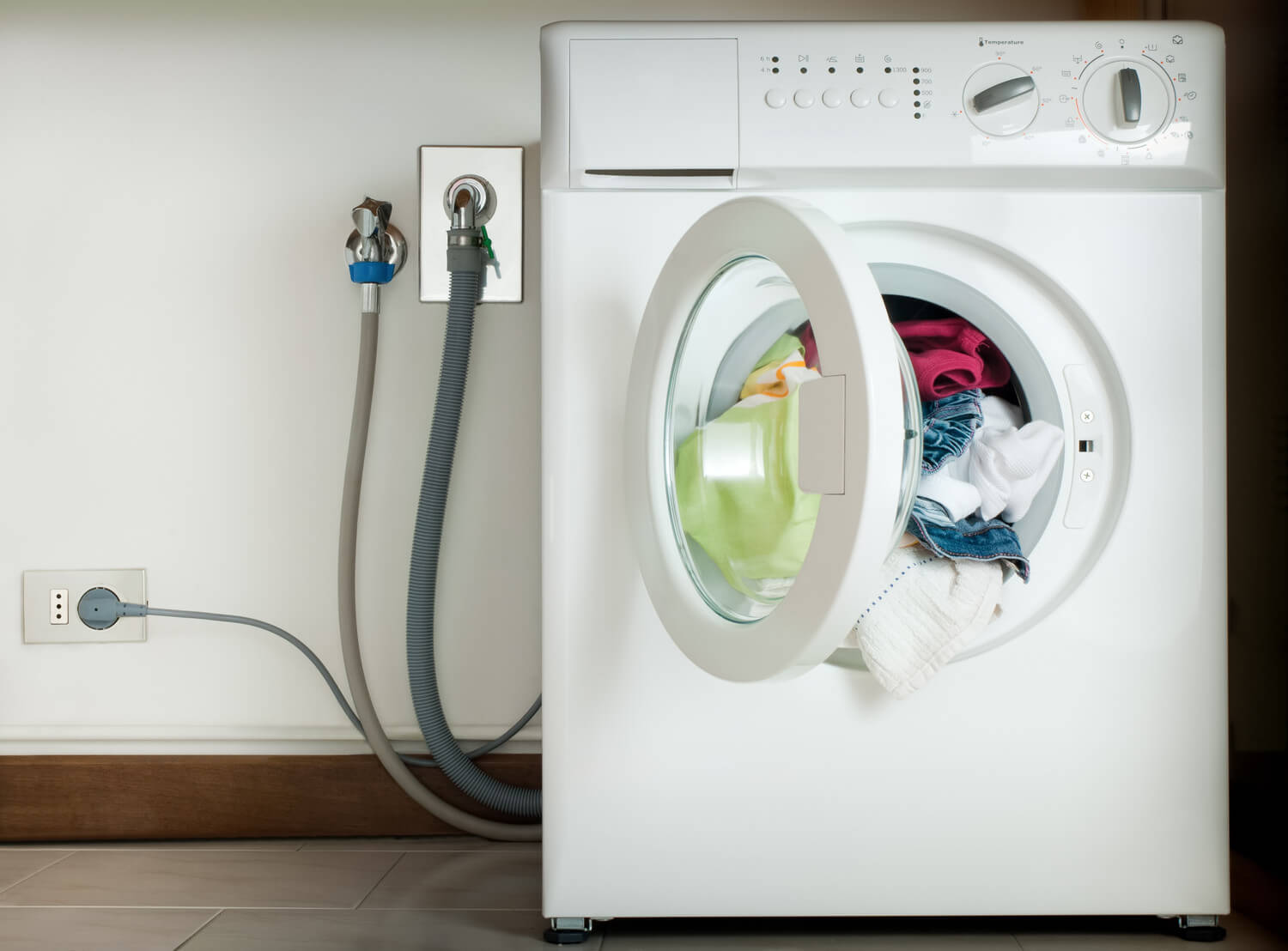
If your washer is not spinning fast enough, the first thing you should check is the draining system. If you observe that your washing machine is not draining correctly, then it will try to spin when it is full of water.
To inspect the issue, check your washing machine hoses for any kinks or clogs, or see whether they are worn down or damaged. After that, check the drain pump and make sure it is not clogged and is working correctly.
2: Avoid overloading your washing machine with clothes
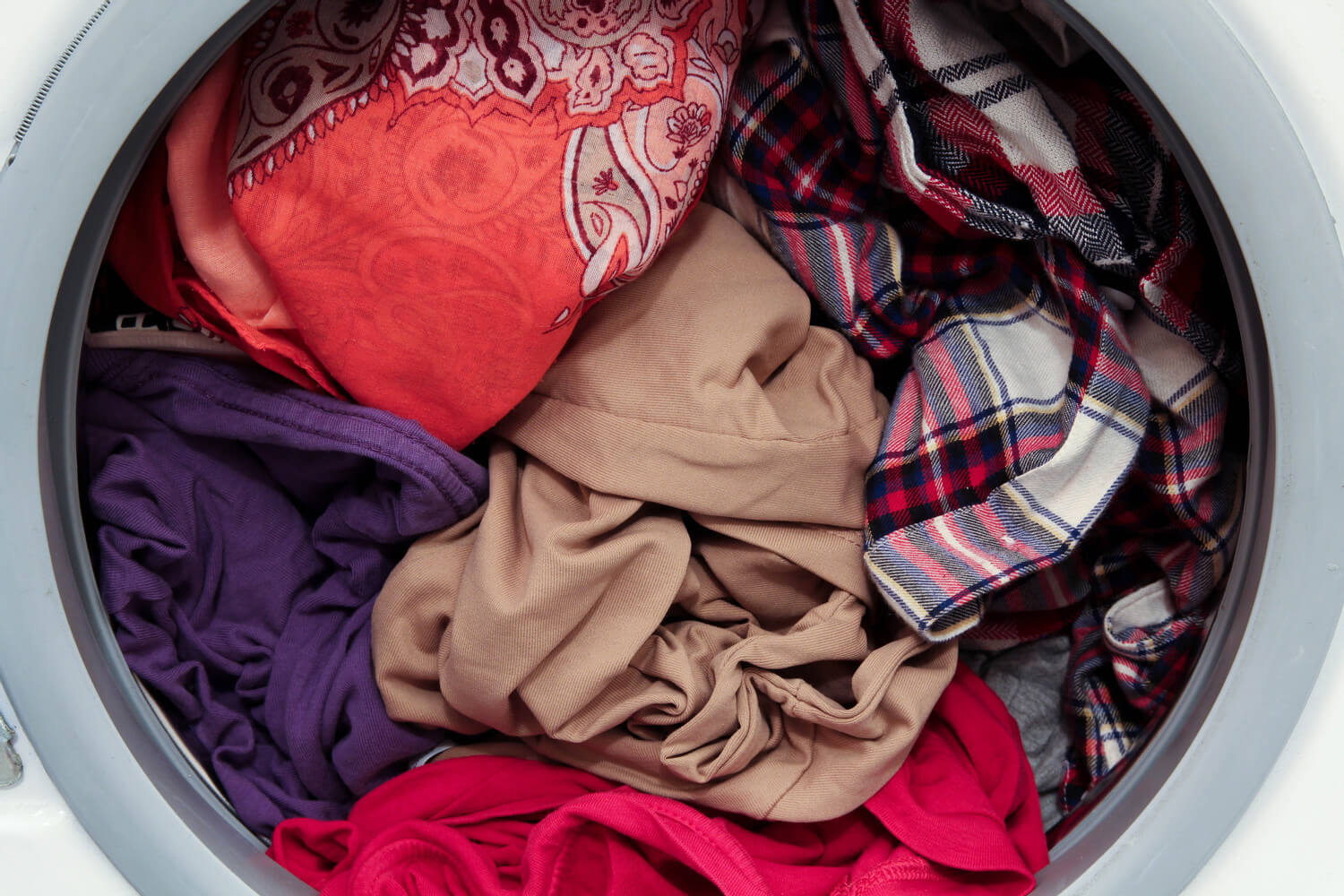
Make sure your washing machine is not overloaded with clothes. Uneven loads in drums can cause your washing machine to spin slowly and cause damage. To inspect whether the load is appropriately distributed or not, check if your washing machine’s lid is closing correctly or not. You can hear an evident click sound when it closes properly.
Plus, observe if your washing machine stops spinning in the middle. If yes, then try removing some heavy pieces of clothing like a big towel or blankets and wash them separately.
3: Check for stuck clothes in the drum
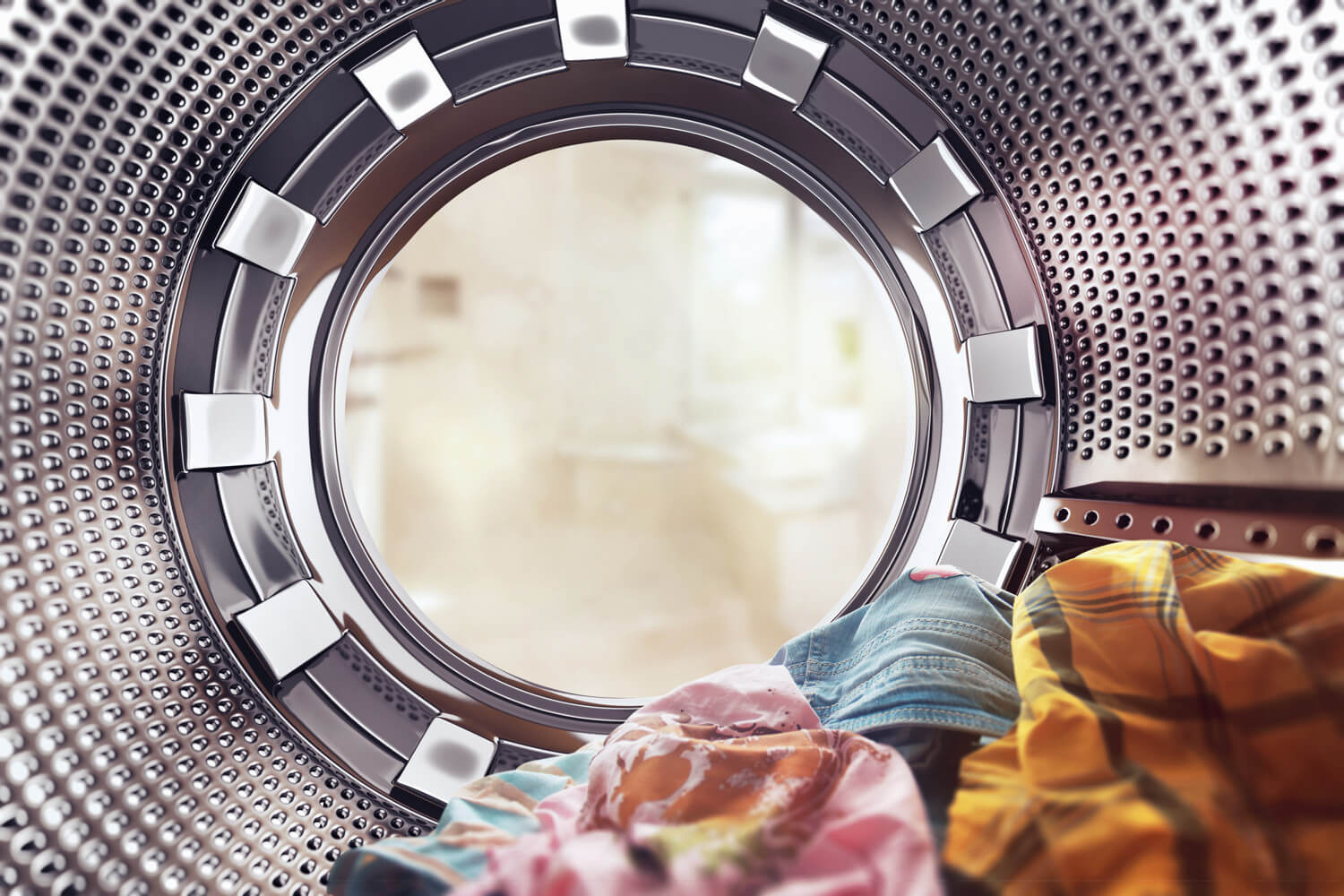
In some cases, pieces of clothing can get stuck between the two tubs of your washing machine. If you have a translucent outer tub, then you can see through whether there are clothes stacked or not. You can also take off the tub to pump the hose and look through the hole to see if there’s anything there as you spin the tub. See if you can reach it; if yes, pull it out through that hole.
If you have a top-loader washing machine, remove the inner tub to pull out the stuck piece of cloth. On the front-loading washing machine, remove the tub assembly and split the two halves of the outer tub. Once you remove the stuck clothes, you can put the washer back together.
4: Check the clutch
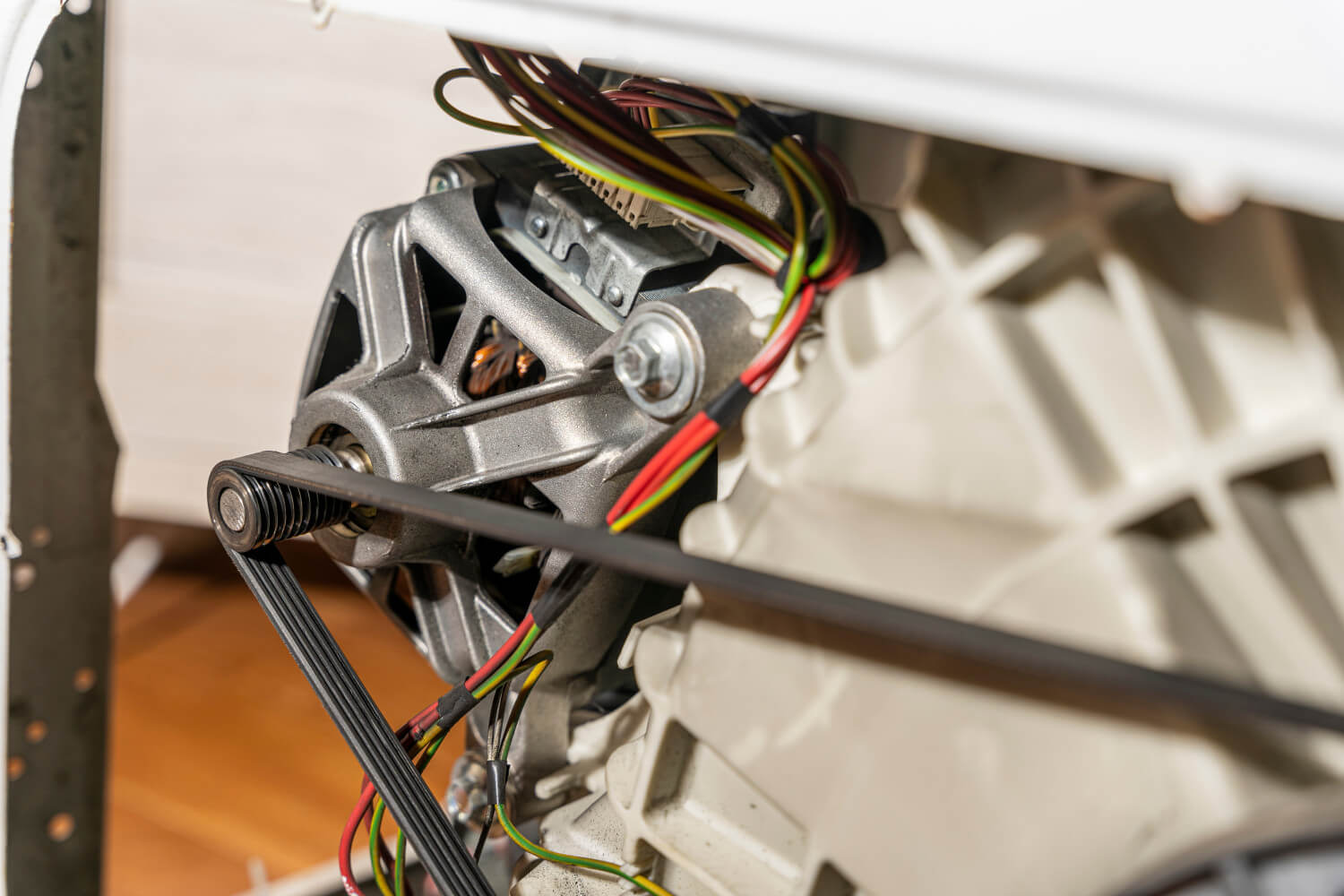
If you have a front-loading washing machine, then checking the clutch functionality is crucial, as it gets the washer tub to spin at full speed. You can locate the clutch at the bottom of your machine. Clutches come in a variety of different designs but work the same.
Inside the clutch plate, you can see a brake pad-like material that helps grip and drive the washer. If that material is worn out, it won’t work correctly in your washing machine, and you will have to replace the clutch plate.
5: Check for broken or damaged drive belts
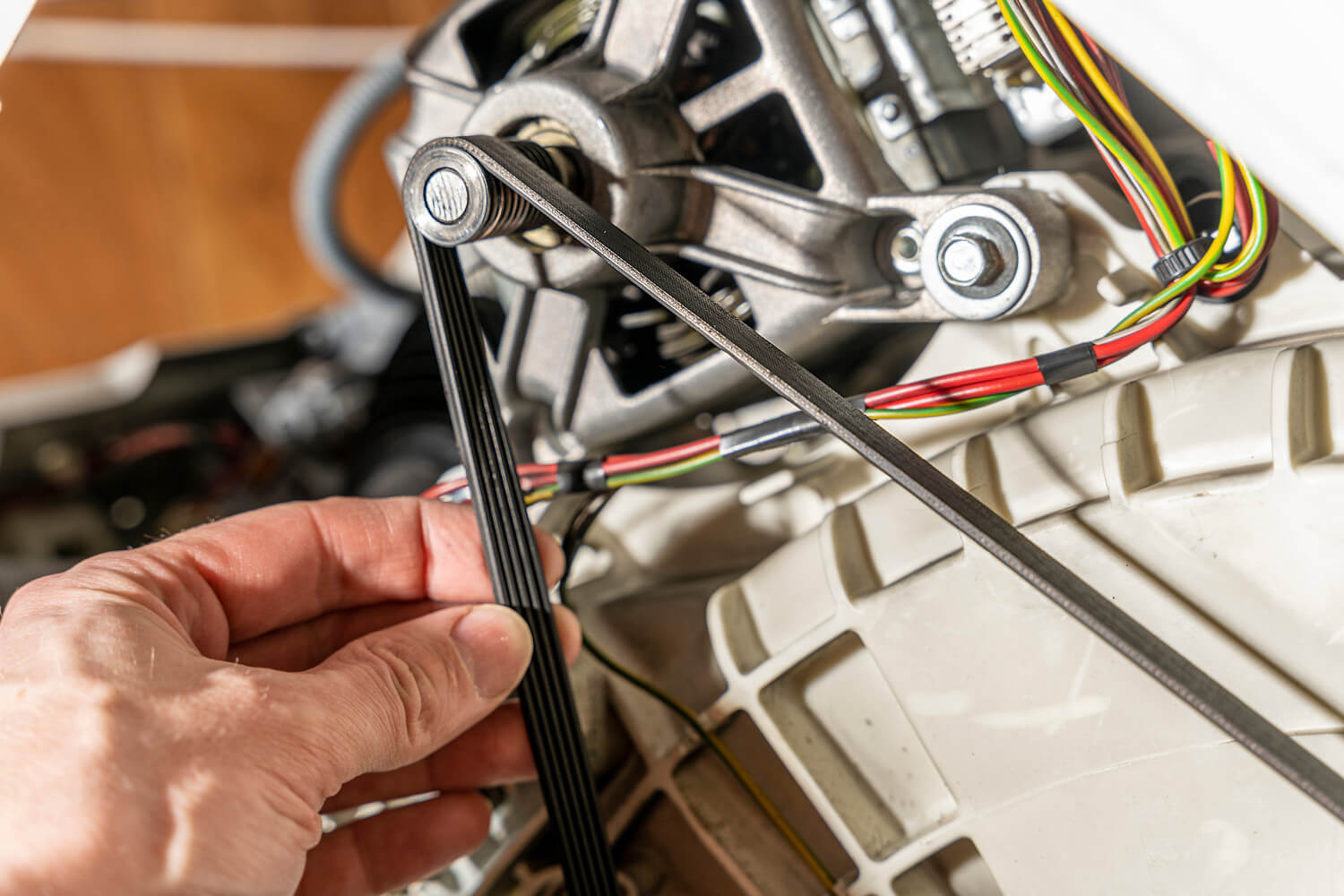
Now, the next step is to check the drive belt. The drive belt is a crucial component of your washing machine, as it connects the motor pulley to the drive pulley so the inner tub can complete the spin cycle. There are two types of drive belts: one is known as the B-type belt, and the other is the multi-groove belt. Regardless of the kind of belt you have, if it starts to fail—let’s say it is stretching to a point where it’s slipping—then the washer will spin slowly.
To find the drive belts, look at the back of your washing machine if you have a front-loading washing machine. If you have a top-loader washing machine, you will find the drive belt at the bottom. Inspect the belt for any burn marks. If you find them, you will have to get them replaced.
6: Check the coupler
Finally, check the coupler, as it is also one of the crucial components that connect the motor to the transmission on older direct top-load washers. The coupler is made up of three pieces: two plastic covering parts, one for the top and the other at the bottom. The middle part is made of rubber. These three parts work together so that the motor can spin the transmission.
One side of the coupler is mounted on the transmission, and another is mounted on the motor. The rubber part goes in between to absorb the shocks and vibrations.
If one of the plastic pieces of the coupler gets cracked where it mounts to the shaft, it could allow the washer to go through the cycle, but when it tries to drive the tub at a higher spin speed, the crack could expand, and the couple could slip, causing the washer to spin slowly.
Also, another sign that your coupler is faulty can be inspected if you hear a lot of noise coming from that area during the spin cycle as the broken coupler pieces grind together, which may also lead to pieces of rubber or plastic on the ground underneath the washer. If that’s the case, then you will need to replace the coupler.
Bonus Tips:
- Check the power connection to your washing machine. Also, it is suggested to plug heavy appliances like your washing machine independently into the switch rather than connecting them to the extension cord. Also, look at the fuse box and check for any blown fuse, and if you find one, contact a certified professional.
- Avoid using too much detergent or use the correct type of detergent. If you don’t do that, then your washing machine will stop spinning and will try to absorb the excess foam in its drum. It is advised that you carefully inspect the type of detergent you are using and make sure that it is the right type for your washing machine. Also, look at the recommended dosage and don’t add more detergent than is required.
- Inspect your fill hose pipe. It’s crucial to regularly inspect your fill hose pipe because any damage could cause it to flood your house with 500 gallons of water per hour.


